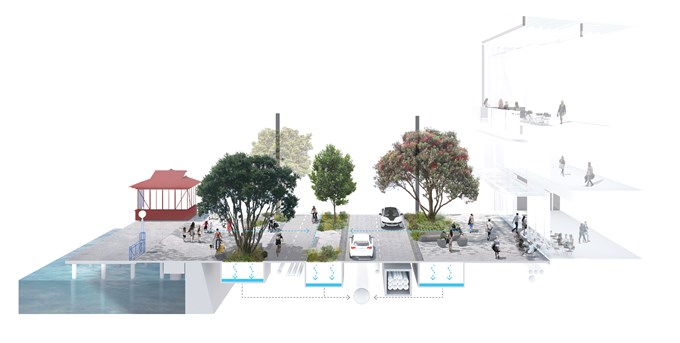A series of specially designed gardens will form the centrepiece of a revitalised Downtown Waterfront as part of the city’s 10-year Downtown Programme.
50 new gardens, including 19 rain gardens, will line Quay Street and be home to up to 200 new native trees as well as the existing Pohutakawa trees which have been relocated to Teal Park during construction.
While the gardens will add to the green edge of the city, providing shade and shelter to the people in Quay Street, it’s the unseen work below the surface of the rain gardens which provides real environmental benefits.

Auckland Transport's Downtown Programme Director Eric van Essen says “rain gardens are an unseen ecological hero.
“A rain garden is a sustainable and economical way of dealing with stormwater using natural filtration processes,” he says.
“Not only do they help remove pollutants and slow down stormwater flows they add colour and interest to the street.
“Stormwater run-off flows through the rain garden soil and plant root systems which absorb and filter contaminants before it flows to the surrounding ground, drains, streams, and eventually to the sea.”

Excavations for the rain gardens commenced mid-July.
“We are about halfway through these works on the southern side of Quay St and expect to have completed the in-ground construction of the rain gardens by the end of August,” he says.
New paving on the south side of Quay St is expected to start in late October/early November 2019 and progress through into early 2020.
The relocated trees and new trees are expected to arrive for planting late 2020.


